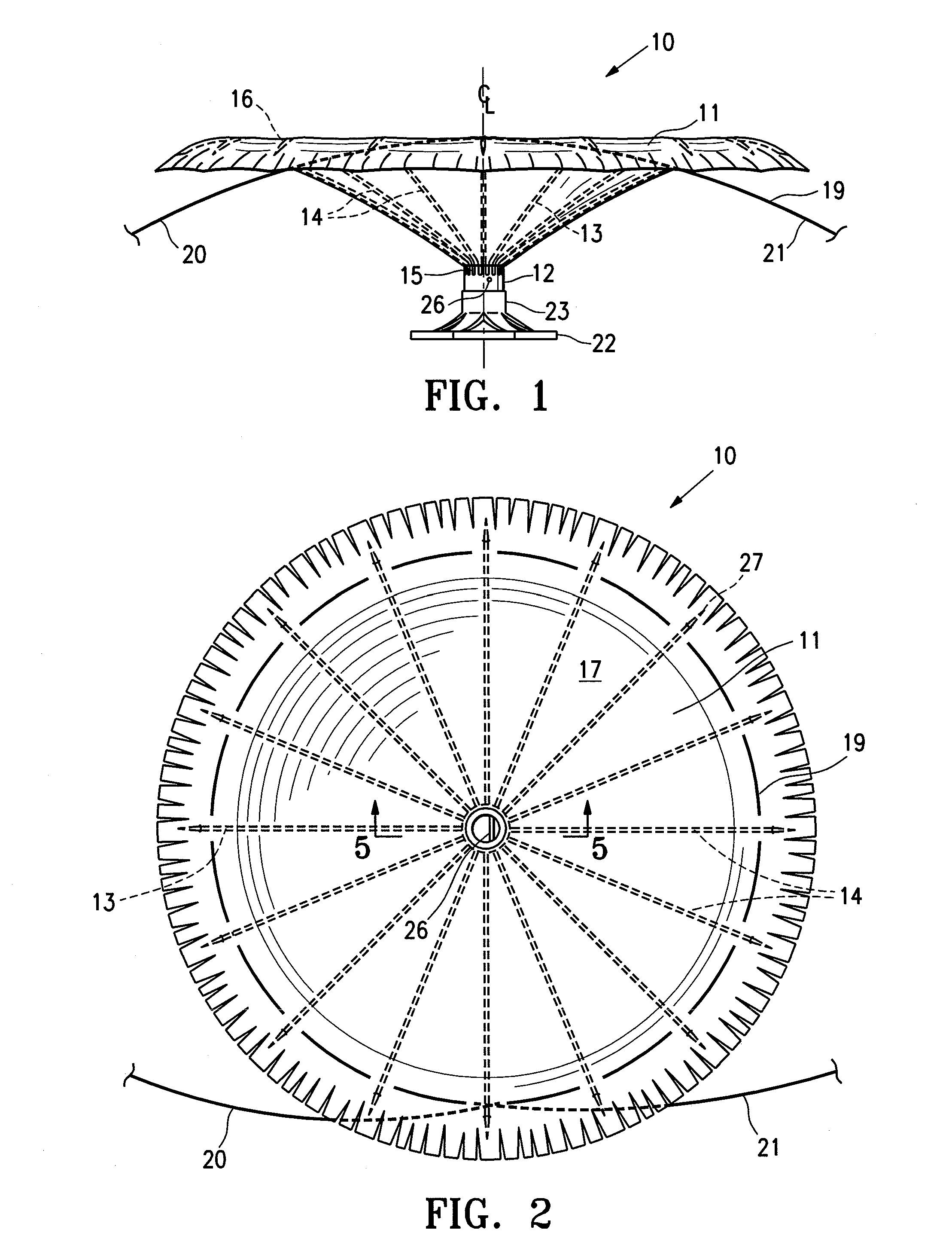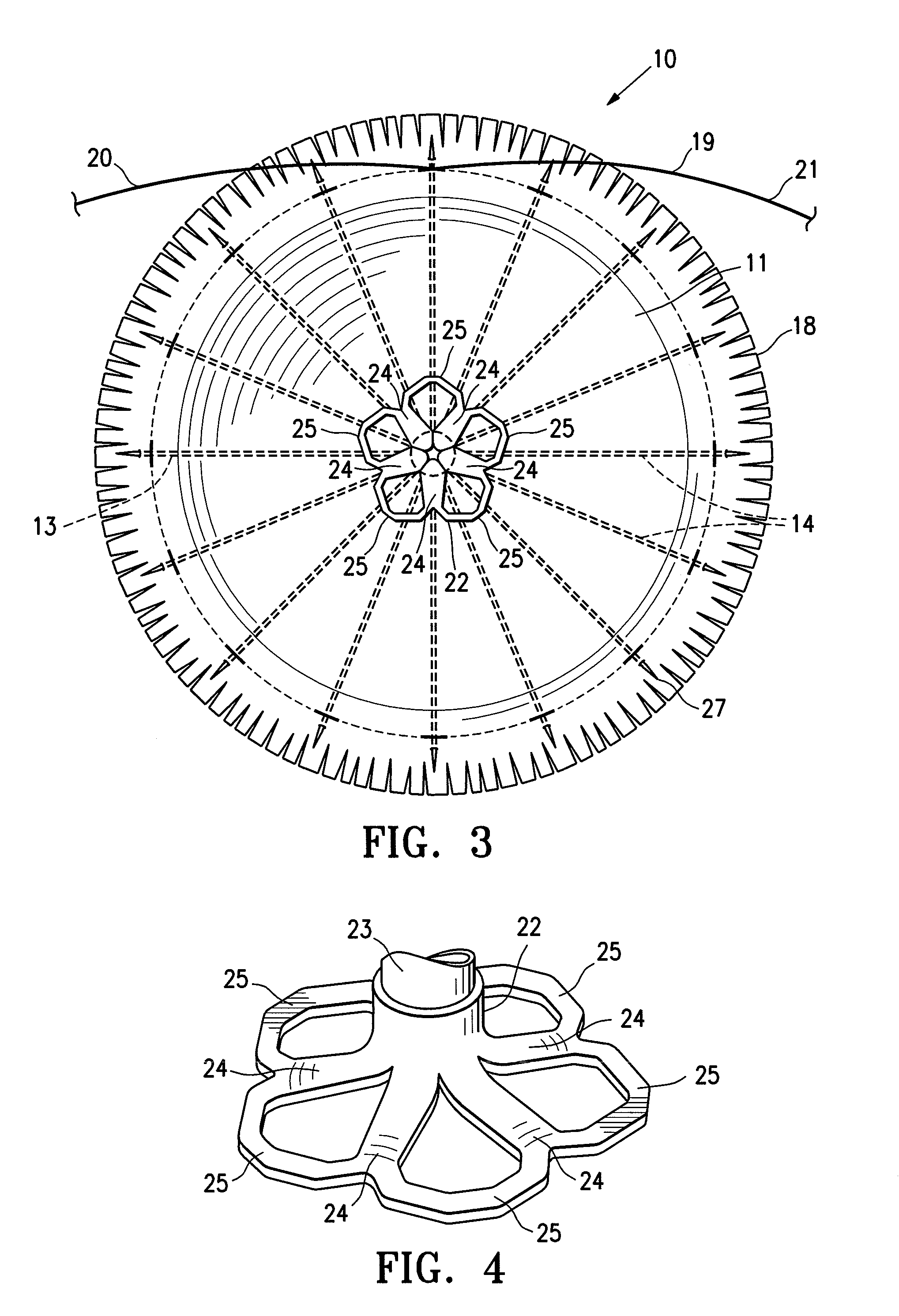Sealing and filling ventricular partitioning devices to improve cardiac function
a technology of ventricular partitioning and sealing device, which is applied in the field of treatment of congestive heart failure, can solve the problems of enlargement of the heart, ineffective pumping of the heart with each heartbeat, and inability to efficiently pump blood forward with each heart beat, so as to reduce the total volume of the heart chamber, improve the ejection fraction thereof, and reduce the stress applied
- Summary
- Abstract
- Description
- Claims
- Application Information
AI Technical Summary
Benefits of technology
Problems solved by technology
Method used
Image
Examples
Embodiment Construction
[0092]Partitioning devices, systems including partitioning devices, and methods of using partitioning devices to treat subjects are described herein. In general, the partitioning devices described herein are configured to partition a heart chamber, and in particular a ventricular chamber, into a productive portion and a non-productive portion. These partitioning devices may be delivered in a collapsed configuration (e.g., percutaneously), and expanded within the ventricle and secured in position within the ventricle, thereby partitioning it. The partitioning devices described herein both secure to the heart wall (e.g., by anchors, barbs, spikes, etc.) and also (and possibly separately) seal to the heart wall. Sealing to the wall of a heart chamber may be complicated or made difficult by the presence of trabeculations and wall irregularities. Thus, the devices described herein may include one or more sealing elements that are configured to help seal the device (e.g., the partitioning...
PUM
 Login to View More
Login to View More Abstract
Description
Claims
Application Information
 Login to View More
Login to View More - R&D
- Intellectual Property
- Life Sciences
- Materials
- Tech Scout
- Unparalleled Data Quality
- Higher Quality Content
- 60% Fewer Hallucinations
Browse by: Latest US Patents, China's latest patents, Technical Efficacy Thesaurus, Application Domain, Technology Topic, Popular Technical Reports.
© 2025 PatSnap. All rights reserved.Legal|Privacy policy|Modern Slavery Act Transparency Statement|Sitemap|About US| Contact US: help@patsnap.com



